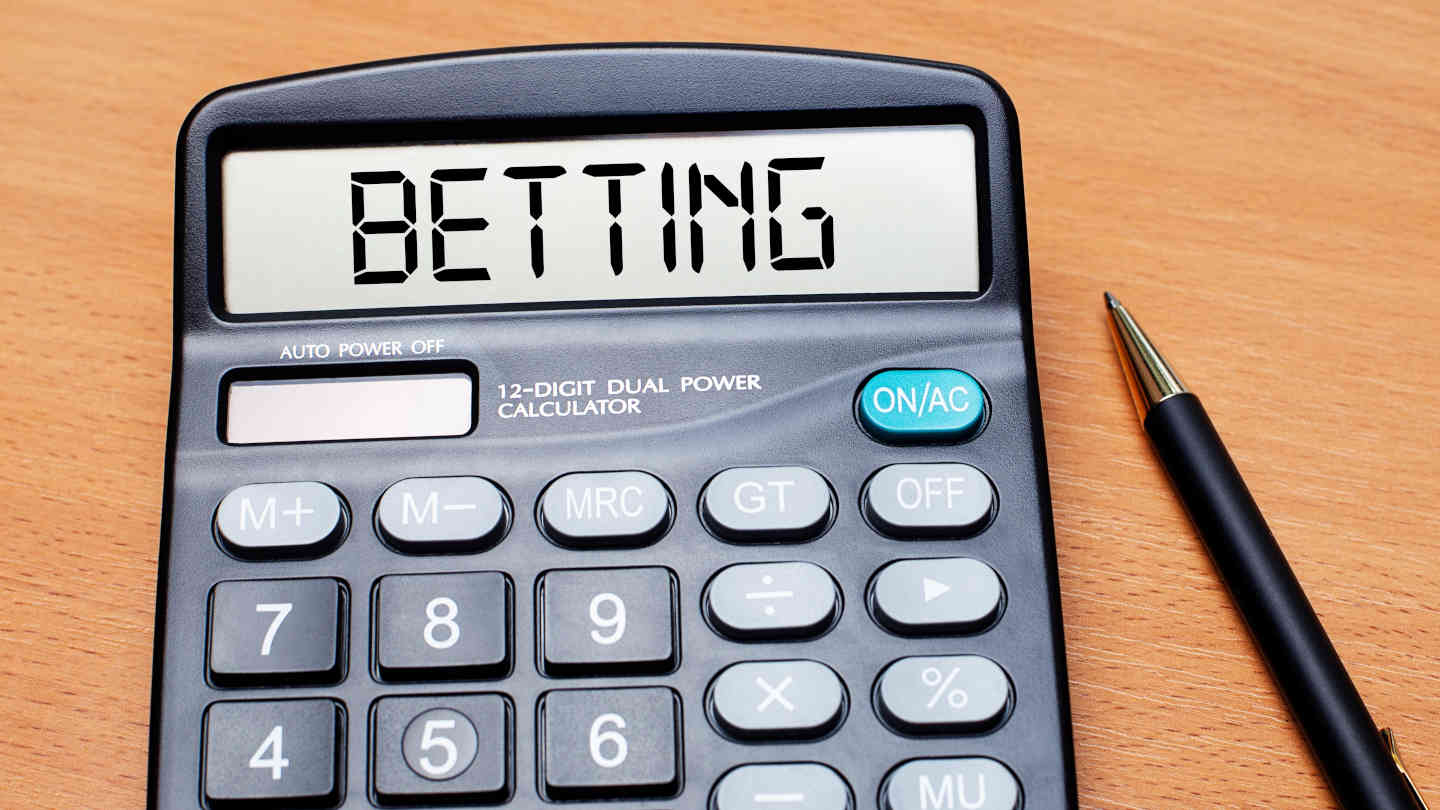Betting Odds Explained – What Do Odds Mean In Betting and How Do They Work

10 minutes
Last Updated: May 31, 2022
If you’re a beginner bettor, one of the first and most important things you need to understand is how different types of betting odds formats work.
Without solid comprehension of how betting odds work, you can’t expect consistent and profitable results when betting on sports.
There are three main types of sports betting odds. These are fractional or UK odds, decimal or European odds, and moneyline or American odds.
In this detailed guide, we will explain each of the three types, go over useful examples, and help you understand how they really work.
What Do Betting Odds Mean?
Before we can dive deeper into the three main examples of betting odds, we first need to understand the meaning of odds in betting.
In simple terms, odds provide a measure of the likelihood of a betting outcome. They are based on many possible events and aspects that influence the potential outcome of a sports game, match, or event.
Odds matter in betting because they help you understand the potential likelihood of the outcome you want to bet on. This is crucial to know if you want to avoid making bad sports bets.
Not only this, but betting odds can help you calculate your particular winning amount. Thus, you can know what kind of return to expect, depending on how much money you bet.
How Do Bets Work: Three Main Types of Odds

Understanding what betting odds mean, we can move on to another key question, how do odds work in betting?
To answer this, we need to look at the three main types of betting odds featured in the best sports to bet on. They all work the same and refer to the same thing, just in a different format and visual presentation.
Still, if you’d like to use any of them, you need to understand how they work. With that in mind, let’s go over each of the three types of betting odds formats:
Decimal Odds
Decimal odds, also known as European or continental odds, are the most popular format globally. This is primarily because this betting odds format is also the simplest of the three.
It enables you to clearly spot the favorite and the underdog and assess their balance just by looking at their respective decimal numbers.
No matter where you play, the decimal odds value represents the amount of money you can expect in return for every $1 (or corresponding currency) you bet.

More specifically, and this is crucial to remember for decimal odds, the total decimal amount represents the total payout, not only your profit.
That is to say that your initial bet is included in the decimal payout. You don’t need to subtract or add anything. This makes it easy to calculate.
The higher the decimal odds, the higher the total potential payout. However, this also means that the bet is riskier and less likely to win.
With this in mind, to give yourself the best winning chances and still bet at good odds, you need to carefully review all of the factors that can impact the outcome of the match or event you’re betting on. Let’s take a look at a few examples to make it a bit clearer:
1st Example
In the 2021 US Open Final tennis match between Djokovic and Medvedev, Djokovic was the clear favorite at 1.36 odds. On the other hand, Medvedev’s winning chances were marked at 3.3, meaning he was the clear underdog.
So, if you had $100 and decided to bet it on Djokovic at 1.36 odds and he wins, you would get back a total of $136. This includes your initial bet and the $36 profit.
Conversely, if you were to bet $100 on Medvedev at 3.3 decimal odds and he wins, you would get a payout of $330. This includes your initial $100 bet plus an amazing profit of $230.
As Djokovic is the best player in the world, the betting odds are understandably in his favor, and you would potentially win less money by betting on him.
Still, in this case, you can see how even the odds can be wrong sometimes, as Medvedev won the final with ease, surprising both his rival and the oddsmakers.
2nd Example
Here’s another example of what you can expect if you bet on football, as there’s usually a third potential outcome to bet on.
Besides someone winning, most football competitions include the option of a draw, which you can bet on if you want.
For example, Manchester City are playing Liverpool in a regular Premier League fixture. Luckily, you will be able to see the best and fastest soccer players in this match.
In this case, you can bet on City winning, Liverpool winning, or the match ending in a draw.
Accordingly, the sportsbook will present you with betting odds for each of the three possible outcomes.
The odds are 2.8 on City, 2.45 on Liverpool, and 2.6 on a draw. You have three possible outcomes in this scenario, so it’s even harder to pick a winner.
Moreover, the betting odds are so tight that you’ll win approximately the same amount of money betting on any of the three options.
There’s no telling which way the game may swing, and the odds indicate that any of the three possible outcomes are almost equally likely to happen.
Fractional Odds
Fractional odds are most commonly known as UK or British odds. This is primarily because these types of odds are mostly used in Great Britain and Ireland. The fractional odds format uses hyphens or slashes to display sports betting odds.
This type of odds is a bit more complex than decimal odds, as it shows how much money you win, excluding your initial betting amount.
In other words, fractional odds don’t show you the total payout you get. They display the profit ratio to the size of your initial bet, meaning that the amount you bet isn’t stated directly in the odds.
So, if the fractional odds say 5/1 (5-1), this means that for every dollar you bet, you get five if you win the bet, making the total payout $6. To make this a bit easier to understand, let’s go through some examples.

1st Example
For instance, you want to make a bet on the NBA finals on who you think will win the championship. The lowest odds on the two teams in the finals, in this case, are 10/11 on the Lakers and 9/4 on the Bucks.
Let’s say that you want to place a $100 bet.
If you bet on the Lakers with the odds of 10/11, it means that you win $10 for every $11 you wager.
Now is where the math comes in a little more complicated.
If you bet $100 on the Lakers, you would make exactly $90.91 ($100 bet x10/11 odds) and get your initial bet of $100, meaning that the sportsbook will pay you a total of $190.91.
On the other hand, if you decide to put your $100 on the Bucks winning the NBA championship, you’d be doing so on odds of 9/4.
That means you’ll be winning $9 for every $4 you bet. Translated in the context of a $100 bet, it means you’ll win $225 ($100 bet x 9/4 odds). When you add your initial $100, the total payout is $325.
2nd Example
Let’s take a look at the football example we’ve discussed when talking about decimal odds, only this time in fractional odds.
If City and Liverpool are playing a league game with three possible outcomes, the fractional odds for the match can be 9/5 on City, 8/5 on a draw, and 29/20 on Liverpool.
Displayed like this, it’s much harder for a beginner to tell the favorite than it is when looking at decimal odds. Still, these are the same odds we listed above, only in a different format.
Moneyline Odds

Moneyline odds are most popular in the US, so they’re also commonly known as American odds.
For beginner bettors and those who haven’t come across this format, moneyline betting odds are also arguably the most challenging ones to understand.
This format is recognized through its + and – signs. More precisely, the favorite team is always marked by the minus sign, showing the amount of money you need to bet to win $100.
Oppositely, the underdogs always have a + prefix in front of their odds, indicating the amount of money you can win for every $100 you bet.
Moneyline odds are similar to fractional odds in the sense that the amounts listed only show the expected profit, not the total amount you receive.
If you win the bet, you get the amount indicated through the odds plus your initial bet. Here are a couple of examples covering how the moneyline odds format works:
1st Example
The New York Knicks are playing a regular-season game against the LA Lakers. As the overwhelming favorites, the Lakers have -780 odds, while the Knicks have +585 moneyline odds.
The favorite is evident in this scenario, and you can see right away how much money you need to risk to potentially win just $100 on the Lakers.
To put it into numbers, let’s say you have a $100 betting bankroll. If you bet it on the Knicks, you can potentially win $585 plus the initial bet, making a total of $685.
On the other hand, if you place $100 on the Lakers at -780 odds, you’d stand to win just a little over $12, making the bet hardly worthwhile.

2nd Example
In this second example, the moneyline odds are much tighter, so the favorite isn’t so clear-cut. Let’s say that the New England Patriots are playing the Miami Dolphins.
The odds on the Patriots are -140 and on the Dolphins are +120. While the difference is not that noticeable, you can still tell who’s the favorite right away by looking at the + and – signs.
That said, now let’s calculate how much you can expect to win if you bet $100 on one of the teams.
A $100 bet on the Dolphins is easier to get, as you can see that you’ll win a $120 profit. If you bet $100 on the Patriots, you can look forward to a potential profit of $170.
This is harder to calculate at face value, so it’s best to use a calculator or odds converter if you’re a beginner.
Conclusion
To briefly sum up this guide on betting odds, the key things to remember are that there are three main types of betting odds, moneyline, fractional, and decimal.
These types merely present the same bet, so there is no difference in total payout numbers. If you’re an absolute beginner, decimal odds are the best option to start with, but make sure to check our guide on different bet types.
Hopefully, this detailed article has helped you understand the meaning of odds in betting, how bets work, and which type of odds format is best for you.
If you’re planning on putting your money on the line, you need to be certain of this and make sure you understand the ins and outs of the format you choose. Keep this in mind, and you’ll undoubtedly have a fun and successful time betting on sports!
Betting Odds FAQs
The simplest betting odds meaning is that odds are a measure of the likelihood of an outcome.
While the particular outcome may be significantly different than the odds, the odds reflect the relation between the two sides in the game. In other words, they indicate who the favorite and who the underdog is.
Every sportsbook has its oddsmakers that draft odds for each game in every sport featured in their offer. After that, the market itself regulates the tiny nuances between the odds from bookmaker to bookmaker.
So, it’s always best to explore sportsbooks before you bet, as they are bound to have different odds.
This is common because bookmakers might have different views and predictions on how a particular game or event will unfold.
Predicting and setting the odds isn’t an exact science, so these discrepancies are very common. You can use this to your advantage and shop around to ensure you always get the best odds.
If you can’t remember how betting odds work, you can conveniently use an odds converter tool.
There are many of these converters available online for free, and they can come in very handy when you need to quickly convert between different odds formats when assessing your potential sports bets.









